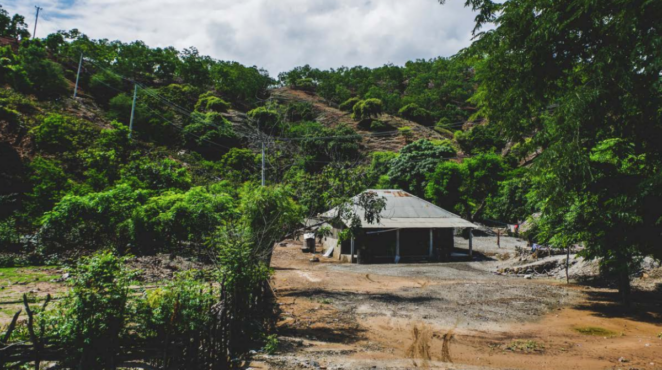How Timor-Leste Is Using the National Adaptation Plan (NAP) Process to Scale Up Ecosystem-Based Adaptation (EbA)

Introduction
Momentum for Ecosystem-based Adaptation (EbA) approaches—which are a type of Nature-based Solutions (NbS)—has been growing globally. In developing countries in particular, EbA offers an adaptation strategy that simultaneously enhances the resilience of both ecosystems and livelihoods—which are closely linked and face serious threats from climate change. For national governments seeking to broaden the uptake of EbA, the National Adaptation Plan (NAP) process can be an effective mechanism and driver for mainstreaming and scaling up EbA.
Timor-Leste communicated its first NAP document to the United Nations Framework Convention on Climate Change (UNFCCC) on March 31, 2021. The country’s NAP recognizes EbA as a foundational element in supporting a systems approach to climate adaptation, disaster risk reduction, and long-term peace and prosperity. Accordingly, Timor-Leste has identified Eba as a guiding principle in its NAP process to connect ecosystem protection and climate action.
This case study discusses how the Timor-Leste government embraced this opportunity. It will also share lessons for other countries seeking to use the NAP process to mainstream and implement EbA.
*Download the full publication from the right hand column. The key messages from the publication are provided below. See the full text for much more detail.
Ecosystem-based Adaptation and Nature-based Solutions
The Convention on Biological Diversity (CBD) defines Ecosystem-based Adaptation (EbA) as “the use of biodiversity and ecosystem services as part of an overall adaptation strategy to help people to adapt to the adverse effects of climate change. It aims to maintain and increase the resilience and reduce the vulnerability of ecosystems and people in the face of the adverse effects of climate change” (CBD, 2009).
Nature-based Solution (NbS) is an umbrella concept for various ecosystem-related approaches. It covers actions to protect, sustainably manage, and restore natural or modified ecosystems that address societal challenges effectively and adaptively, simultaneously providing human well-being and biodiversity benefits (Cohen-Shacham et al., 2016). EbA represents just one approach under the NbS umbrella. This means all EbA solutions are NbS, but not all NbS are EbA.

EbA in Timor-Leste’s NAP Process
Timor-Leste’s NAP identifies EbA as one of the 14 guiding principles underpinning the NAP process and its future adaptation strategies in order to “maximize co-benefits between adaptation efforts and environmental protection” (Government of Timor-Leste, 2021). The NAP document emphasizes the importance of ecosystems and biodiversity and their integral role in livelihoods and community resilience.
Timor-Leste’s NAP demonstrates how giving ecosystems and EbA a central role in adaptation planning can yield long-term positive results for both climate adaptation and ecosystem resilience, as well as contributing to post-conflict development and peacebuilding. To illustrate Timor-Leste’s experience in mainstreaming EbA, the following section identifies the practical actions taken by Timor-Leste along the eight guiding principles outlined in the NAP Global Network guidance note on maximizing EbA through NAP processes (Terton & Greenwalt, 2020).
Guiding Principle 1: Emphasize the role of ecosystems in vulnerability reduction for people, their livelihoods, and socio-economic development.
Guiding Principle 2: Take an ecosystem-level approach to vulnerability and risk assessment using the best available science, as well as Indigenous and Traditional Knowledge.
Guiding Principle 3: Adopt an integrated approach that considers ecosystems across all sectors in the NAP process.
Guiding Principle 4: Embrace global policy alignment by considering synergies with other relevant international commitments that EbA solutions contribute to.
Guiding Principle 5: Make use of the participatory and inclusive nature of the NAP process to design the most appropriate and effective EbA solutions.
Guiding Principle 6: Use the NAP process to engage sub-national and local-level governments in the design and implementation of regional and local EbA solutions.
Guiding Principle 7: Adopt a long-term approach and ensure sufficient resources for the implementation of EbA solutions
Guiding Principle 8: Ensure accountability and performance by building an evidence base for EbA solutions as part of an overall NAP monitoring and evaluation (M&E) system.

Lessons Learned
Timor-Leste’s approach to EbA in the NAP process provides important opportunities and lessons learned for other practitioners and NAP teams, including:
- Timor-Leste’s NAP process puts people at the centre of adaptation planning and establishes an important mandate of mainstreaming EbA to protect people’s livelihoods and ecosystems.
- Timor-Leste’s NAP document links climate adaptation objectives with biodiversity and ecosystem protection goals.
- Experience from Timor-Leste shows that EbA implemented in conjunction with Indigenous and traditional practices could yield positive results for adaptation programming, as well as for post-conflict peacebuilding and reconciliation.
- Timor-Leste’s NAP document accentuates the urgency of building institutional and human capacity to better carry out effective EbA actions.
- The Government of Timor-Leste, through its NAP process, is integrating adaptation and ecosystem considerations into its strategic development plan and post-conflict nation-building priorities to support a resilient and sustainable economy.
References
Suggested Citation
Qi, Jeffrey (2021)How Timor-Leste Is Using the National Adaptation Plan (NAP) Process to Scale Up Ecosystem-Based Adaptation (EbA).Winnipeg, Canada: International Institute for Sustainable Development. Retrieved fromwww.napglobalnetwork.org
Related resources
- Guidelines for Integrating Ecosystem-based Adaptation (EbA) into National Adaptation Plans (NAPs)
- Video | Amplifying Ecosystem-based Adaptation (EbA) with National Adaptation Plan (NAP) Processes
- Safeguarding livelihoods and promoting resilience through National Adaptation Plans– Case study: Kenya
- Ecosystem-based adaptation to increase flood resilience of vulnerable people - Evidence from central Vietnam
- Exploring the potential of ecosystem-based approaches
- New programme of research translation, policy advice and advocacy for nature-based solutions to climate change
(0) Comments
There is no content